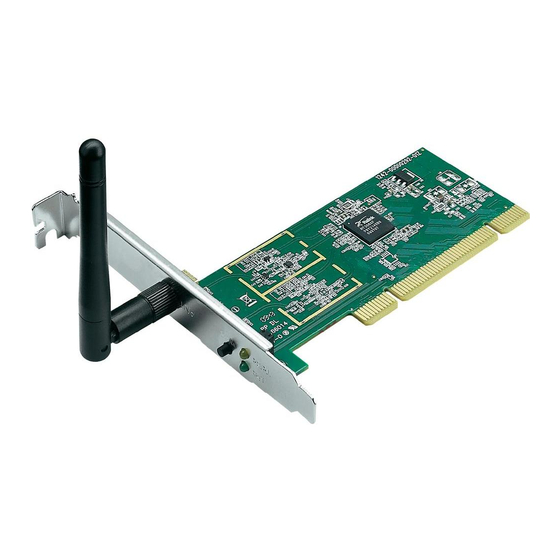Asus PCI-N10 사용자 설명서 - 페이지 21
{카테고리_이름} Asus PCI-N10에 대한 사용자 설명서을 온라인으로 검색하거나 PDF를 다운로드하세요. Asus PCI-N10 34 페이지. Wireless local area network card for 802.11 g/b/n wireless networks
Asus PCI-N10에 대해서도 마찬가지입니다: 빠른 시작 매뉴얼 (2 페이지)

PCE-N10 WLAN Card User Manual
Wireless Network Key (WEP) - This option becomes configurable when you
select WEP in the Data encryption field. 64-bit WEP key uses 5 ASCII characters
(10 hexadecimal digits). 128-bit WEP key uses 13 ASCII (26 hexadecimal digits).
Key Format - Allows you to select the key format.
Manual Assignment (WPA and WPA2)- Allows you to assign WEP Keys
manually.
Key Length - Allows you to select the key length. For 64bits encryption, each
key consists of 10 hexadecimal digits or 5 ASCII characters. For 128bits
encryption, each key consists of 26 hexadecimal digits or 13 ASCII characters.
Select one as your Default Key - Allows you to select one of the four WEP
Keys as the default key.
Config - Advanced
This Advanced page is intended for experienced
users to set up additional parameters for the
WLAN card. We recommend that you keep
the default values.
RTS Threshold (0-2347) - The Request to
Send/Clear to Send (RTS/CTS) function is
used to minimize collisions among wireless
stations. When RTS/CTS is enabled, the router
refrains from sending a data frame until another RTS/CTS handshake is completed.
Enable RTS/CTS by setting a specific packet size threshold. The default value (2347)
is recommended.
Fragmentation Threshold (26-2346) - Fragmentation is used to divide 802.11
frames into smaller pieces (fragments) that are sent separately to the destination.
Enable fragmentation by setting a specific packet size threshold. If there is an
excessive number of collisions on the WLAN, experiment with different fragmentation
values to increase the reliability of frame transmissions. The default value (2346) is
recommended for normal use.
Preamble Mode - Select the preamble mode. The default value is Auto.
18
ASUS WLAN Card
